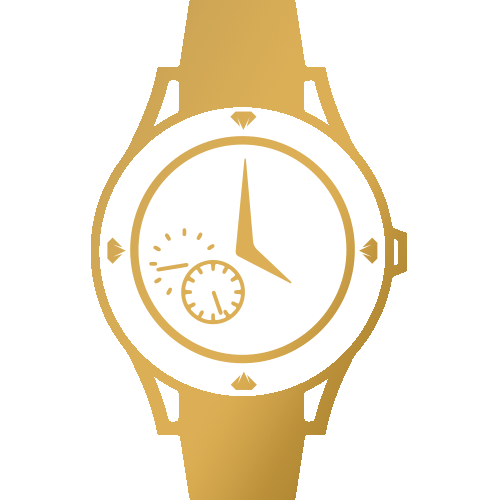
A Guide to Wristwatch Repair
Note: This guide focuses on mechanical and automatic watches—those powered by winding, rather than quartz watches, which run on batteries.

Keeping Your Timepiece in Perfect Condition
Is your mechanical or automatic watch running too fast, too slow, or not at all? These intricate machines rely on precise movements, and even the smallest issue can throw them off track. Because of their complexity, most watch problems require a professional touch. However, understanding the basics of how your timepiece functions can help you communicate more effectively with a watch repair technician or horologist. In this guide, we’ll break down the key components of a watch’s movement, common issues that can arise, and how professionals restore timepieces to working order.
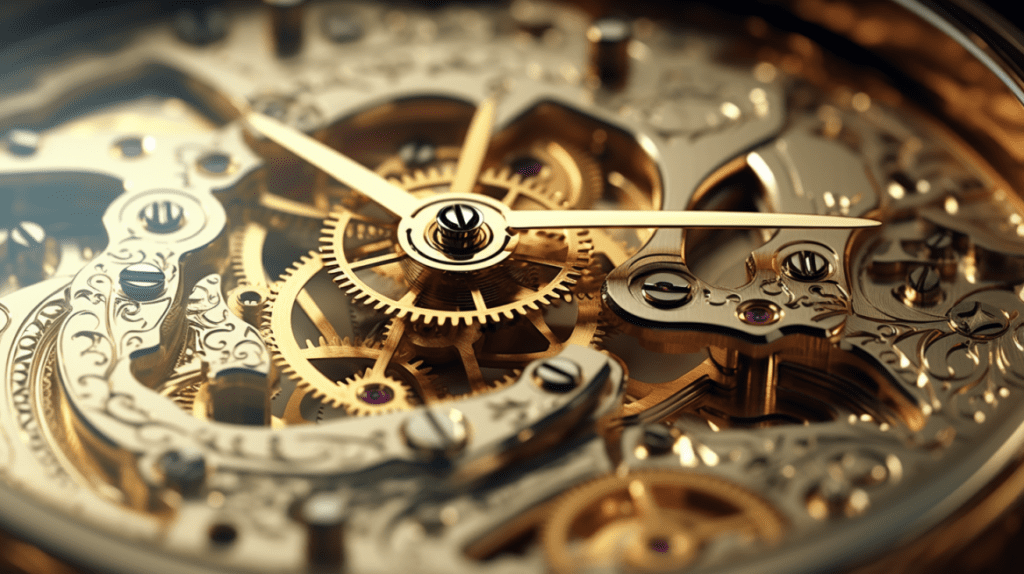
How a Watch Movement Works
Luxury watches from brands like Patek Philippe, Omega, and TAG Heuer may feature various complications (advanced functions), but at their core, all mechanical and automatic watches operate on the same fundamental principles. Their movements consist of four main components:
- Mainspring – The power source
- Wheel Train – Transfers energy through gears
- Escapement – Regulates time increments
- Balance Wheel – Ensures precision and accuracy
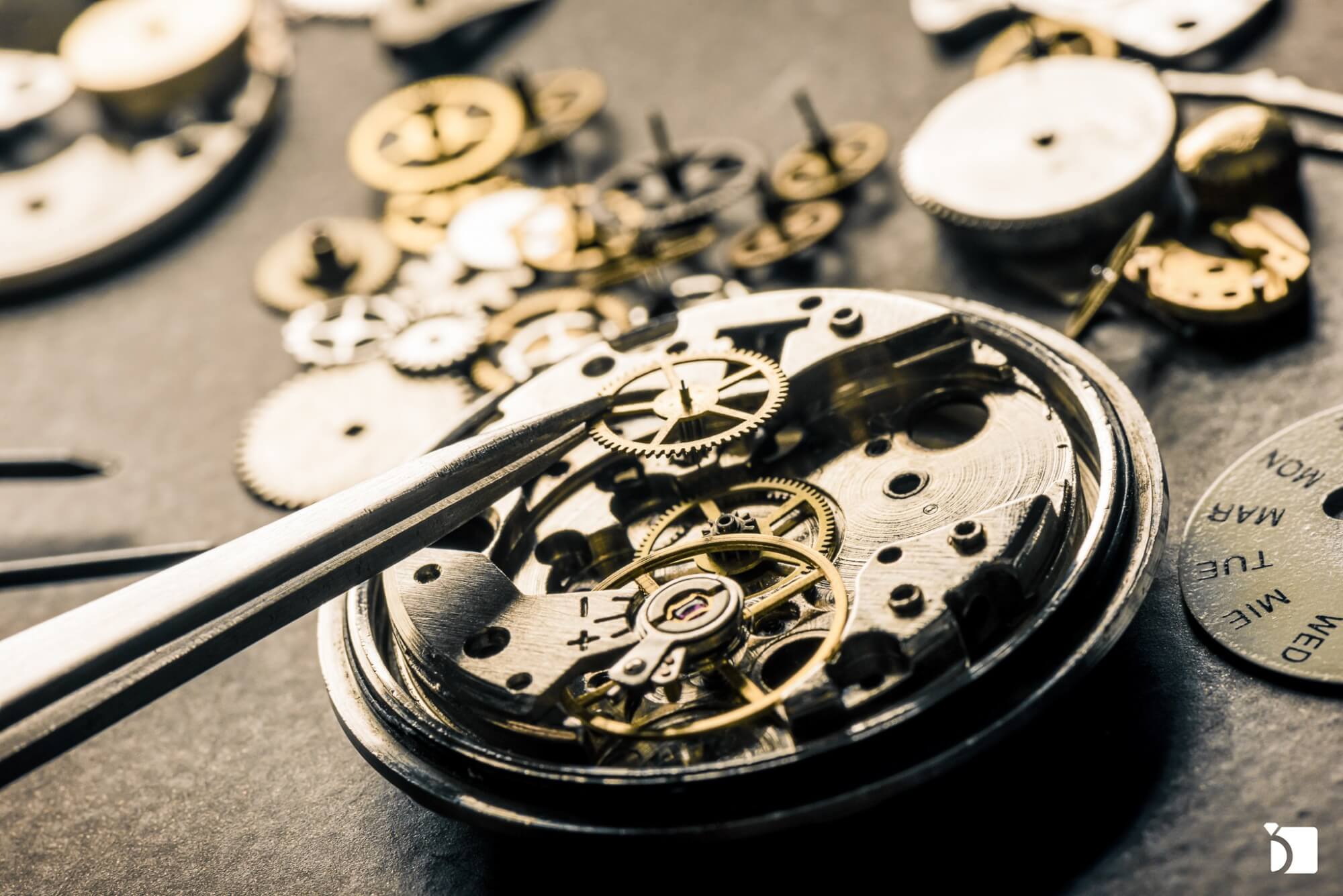
Each of these components plays a critical role in keeping your watch ticking. Below is an overview of how they function and what can go wrong.
Key Watch Components & Common Issues
1. The Mainspring: Powering the Watch
The mainspring is a tightly wound coil that stores mechanical energy. When you wind your watch—either manually in mechanical models or through wrist motion in automatic pieces—the mainspring tightens. As it unwinds, it releases energy that powers the movement of the watch hands.
Potential Issues:
- Over time, the mainspring can deteriorate or warp, leading to a “tired” or “set” mainspring.
- Signs include the watch stopping unexpectedly, requiring frequent winding, or the second hand getting stuck.
Solution:
- A professional watchmaker will replace the mainspring and check for other maintenance needs.

2. The Wheel Train: Transferring Power to the Hands
The wheel train is a set of five interconnected gears that convert the mainspring’s energy into controlled time increments. The second, minute, and hour hands are three of these gears.
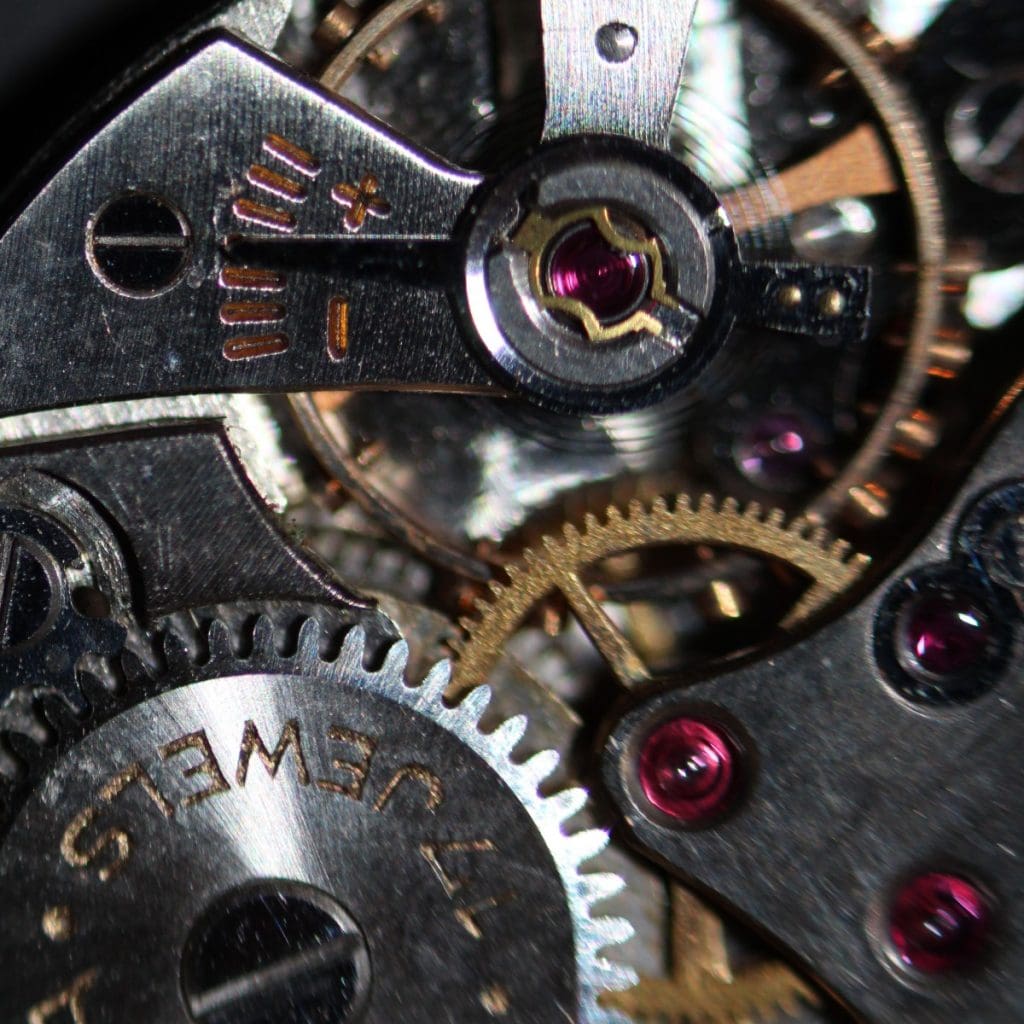
Potential Issues:
- Misaligned gears due to friction or movement disruptions can cause the watch hands to skip, lag, or misalign with the dial markers.
- A faulty dial washer, which stabilizes the gears, can also cause misalignment.
Solution:
- A watch repair technician will inspect the gears, replace the dial washer if needed, and ensure proper alignment of the hands.
3. The Escapement: Keeping Time in Check
The escapement regulates the release of energy from the wheel train, dividing motion into precise, measured intervals. It interacts with the final gear in the wheel train (the escape wheel) and the balance wheel to maintain the watch’s steady ticking motion.
Potential Issues:
- A malfunctioning escapement can cause the watch to run too fast, too slow, or stop altogether.
Solution:
- A professional will clean, adjust, or replace escapement components as necessary.
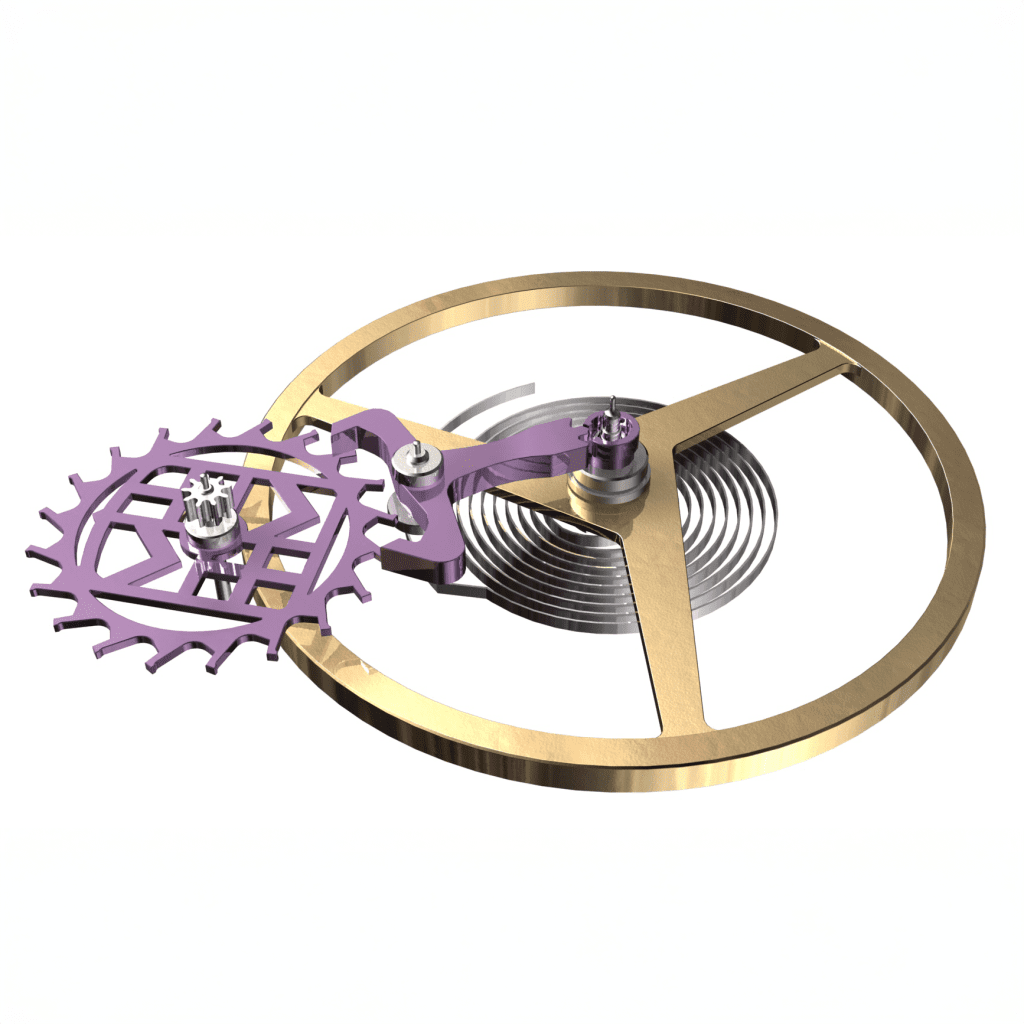
4. The Balance Wheel: Ensuring Accuracy
Attached to a delicate hairspring, the balance wheel oscillates back and forth in a precise rhythm, working with the escapement to regulate timekeeping. Each oscillation helps the escape wheel move forward one notch per second, creating the signature “tick-tock” sound.
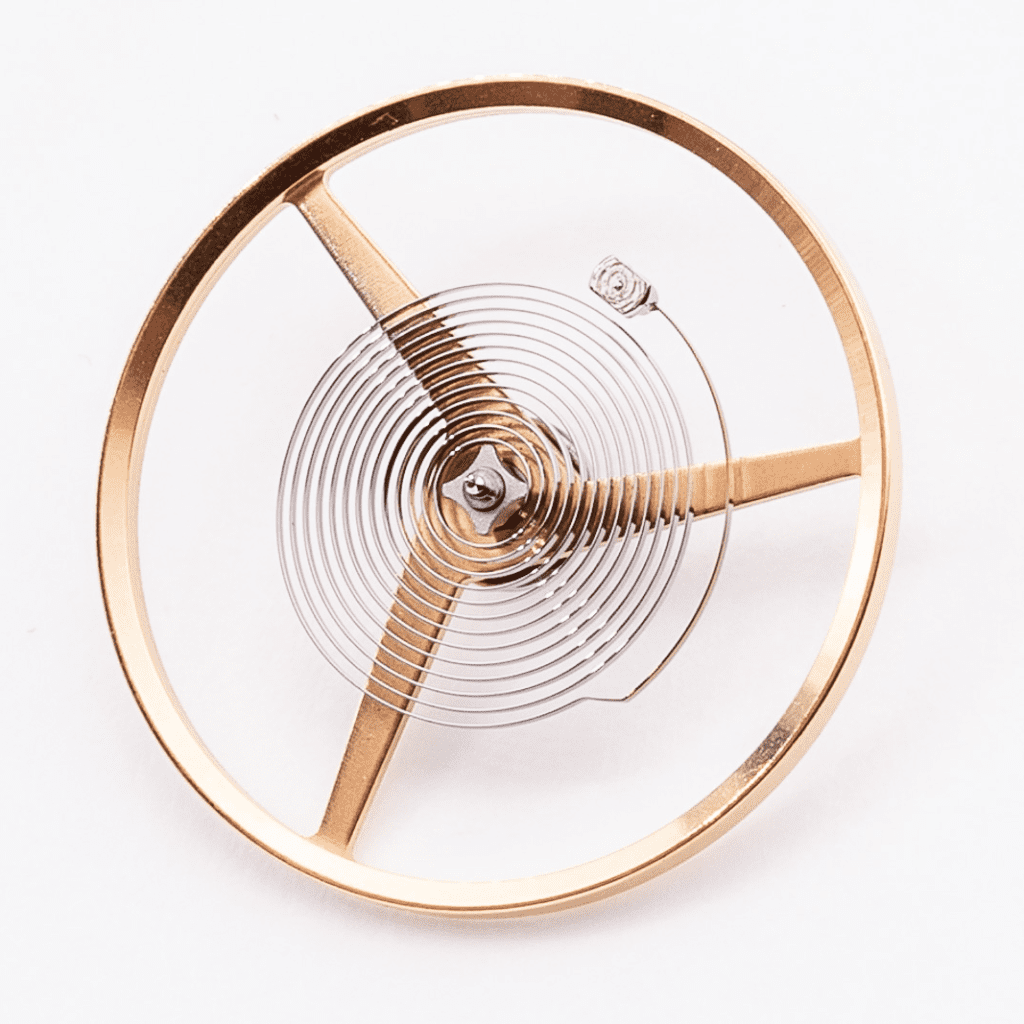
Potential Issues:
- A damaged hairspring or balance wheel can cause erratic timekeeping.
Solution:
- A watchmaker will recalibrate, repair, or replace the balance wheel and hairspring if needed.
How to Maintain Your Watch
Preventative care is key to keeping your watch in optimal condition. Experts recommend servicing mechanical and automatic watches every three to five years, particularly for luxury, heirloom, or vintage timepieces.
Best Practices for Watch Maintenance:
✅ Wind your watch regularly to keep the movement lubricated.
✅ Store your watch in a stable environment—avoid extreme temperatures and humidity.
✅ Keep your watch away from magnets, which can disrupt accuracy.
✅ Clean your watch with a soft cloth to remove dirt and oil buildup.
✅ Have your watch professionally serviced to maintain its longevity and value.
Last updated 02/27/2025
Resources:
- ¹Watch Mainspring by Hustvedt: https://commons.wikimedia.org/
- ²Watch Wheel Train on PX Here: https://pxhere.com/
- ³Watch Escapement by zVisuel SA: https://commons.wikimedia.org/
- ³Watch Balance Wheel by Scharf82: https://commons.wikimedia.org/
- Blog outline and revising assisted by AI resources such as Google Gemini.
Premier Watch Repair Services with My Jewelry Repair
If your watch needs repair, trust only a certified watch repair expert. At MyJewelryRepair.com, we work with skilled horologists across the country to provide top-tier watch restoration services.

Check Out the Magic of Our Watch Repair Services!
